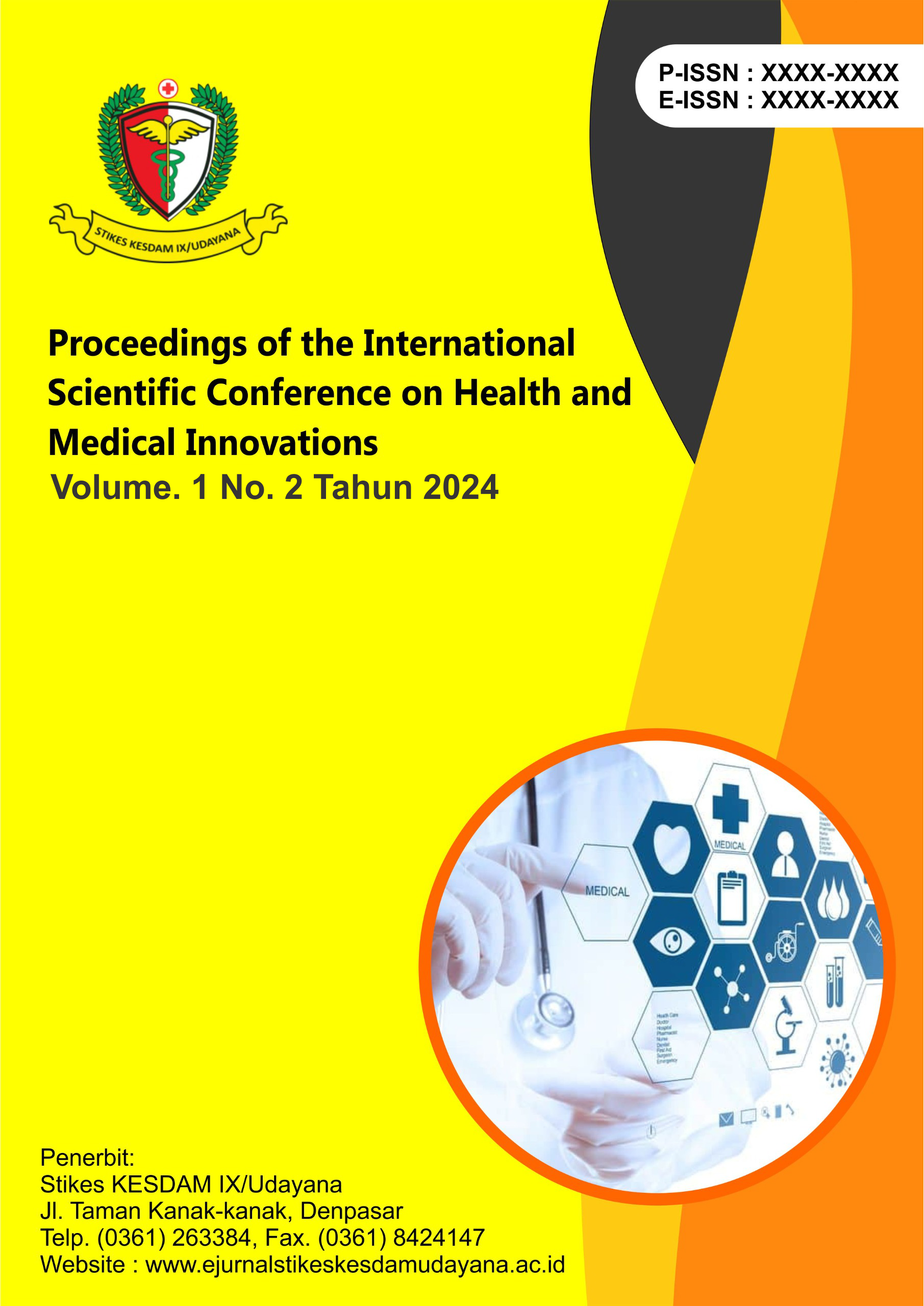Description Of Nurses' Level Of Anxiety in Caring For Covid-19 Patients at TK II Udayana Hospital Denpasar
Keywords:
Nurses, Anxiety, COVID-19Abstract
Background Behind : According to the World Health Organization (WHO), the incidence of hyperthermia in children worldwide reaches 17 million people per year, the death rate reaches 600,000, of which 70% occurs in Asia. The incidence of hyperthermia in Indonesia reaches 81% per 100,000 . If hyperthermia is not treated properly, shock, stupor and coma can occur. Parents have an important role in maintaining their child's health. One compress technique to reduce fever is the tepid water sponge , which is by giving a warm compress using a cloth that is wiped on the forehead area which aims to reduce the fever in 15 minutes faster than just using antipyretic medication. Method : Study This use method descriptive with approach quantitative use tool measuring questionnaire and sampling technique used is total sampling with The total population is 55 people and samples as many as 51 respondents. This research uses descriptive statistical analysis regarding the level of parents' knowledge about the tepid water sponge technique. Results: The characteristics of the respondents were mostly 26-35 years old with a total of 59%, the highest level of education was high school with a total of 49% and the largest job was in the private sector with a total of 39.2%. Most respondents had a low level of knowledge, amounting to 37.2%.Conclusion : Most of the respondents own level low knowledge. It is hoped that nurses will provide support and IEC regarding the tepid water sponge technique to reduce hyperthermia in children
References
Dinah, & Rahman, S. (2020). Overview of nurses' anxiety levels during the COVID-19 pandemic in developing and developed countries: A literature review. Health Dynamics: Journal of Midwifery and Nursing, 11(1), 37–48. https://doi.org/10.33859/dksm.v11i1.555
Fadli, F., Safruddin, S., Ahmad, A. S., Sumbara, S., & Baharuddin, R. (2020). Factors that influence anxiety in health workers in efforts to prevent COVID-19. Indonesian Journal of Nursing Education, 6(1). https://doi.org/10.17509/jpki.v6i1.24546
Handayani, R., Suminanto, T., Darmayanti, A. T., Widiyanto, A., & Atmojo, J. T. (2020). Conditions and strategies for handling anxiety in health workers during the COVID-19 pandemic. Journal of Psychiatric Nursing, 3(3), 367–376.
Handayani, R., Suminanto, T., Darmayanti, A. T., Widiyanto, A., & Atmojo, J. T. (2020). Conditions and strategies for handling anxiety in health personnel during the COVID-19 pandemic. Journal of Psychiatric Nursing, 3(3), 367–376.
Huang, C., Wang, Y., Li, X., Ren, L., Zhao, J., Hu, Y., … & Gu, X. (2020). Clinical features of patients infected with 2019 novel coronavirus in Wuhan, China. The Lancet, 395(10223). https://doi.org/10.1016/S0140-6736(20)30252-X
Lai, H., Ma, J., Wang, L., Cai, Z., Hu, J., Wei, X., … & Kang, L. (2020). Factors associated with mental health outcomes among healthcare workers exposed to coronavirus disease 2019. JAMA Network Open.
Lai, J., Ma, S., Wang, L., Cai, Z., Hu, J., Wei, X., … & Kang, L. (2020). Factors associated with mental health outcomes among healthcare workers exposed to coronavirus disease 2019. JAMA Network Open, 3(3). https://doi.org/10.1001/jamanetworkopen.2020.3976
Levitt, S. D. (2014). Think like a freak (1st ed.). Jakarta: Adi Toha (Translator).
Ministry of Health of the Republic of Indonesia. (2020). Guidelines for prevention and control and definition of coronavirus disease (COVID-19). Germas.
Sutejo, S. (2018). Mental nursing: Concepts and practices of mental health nursing care: Mental and psychosocial disorders. Behavioral Analysis Letters, 2(5).
Wang, D., Hu, B., Hu, C., Zhu, F., Liu, X., Zhang, J., … & Peng, Z. (2020). Clinical characteristics of 138 hospitalized patients with 2019 novel coronavirus-infected pneumonia in Wuhan, China. JAMA - Journal of the American Medical Association, 323(11), 1061–1069. https://doi.org/10.1001/jama.2020.1585




